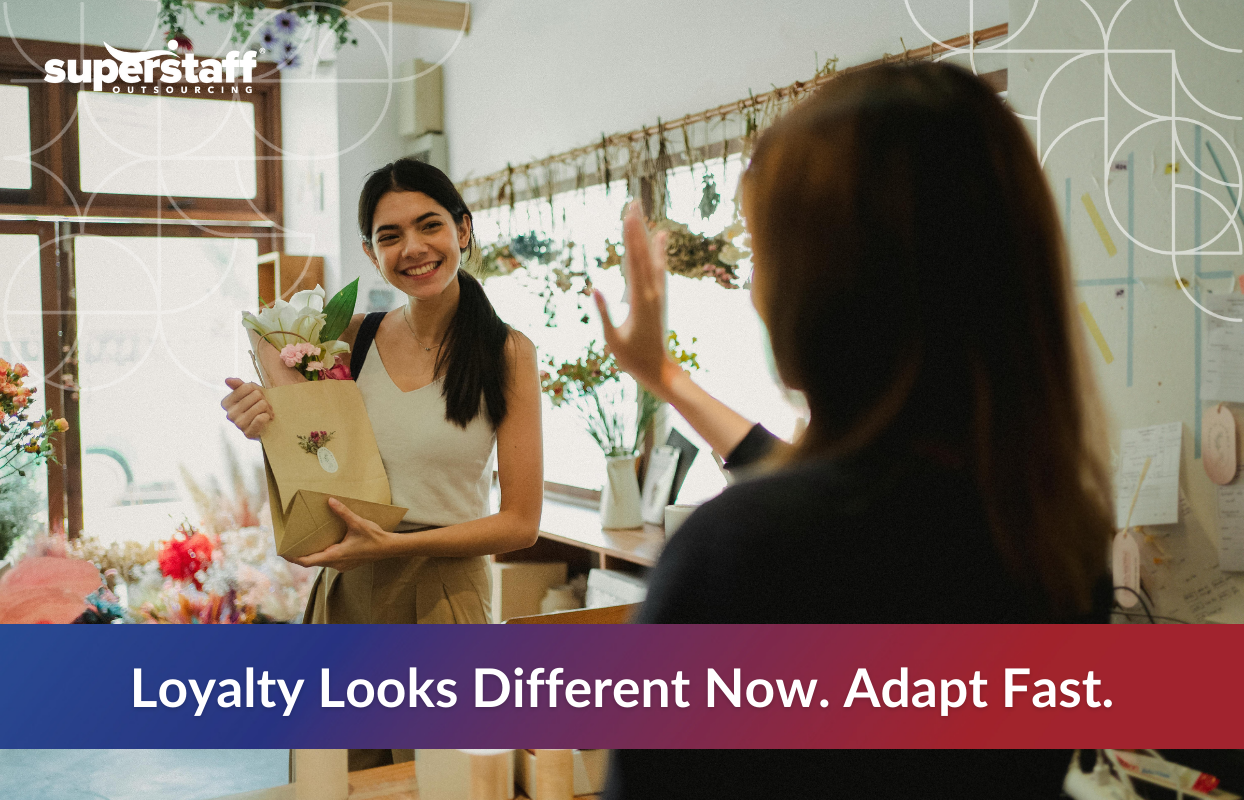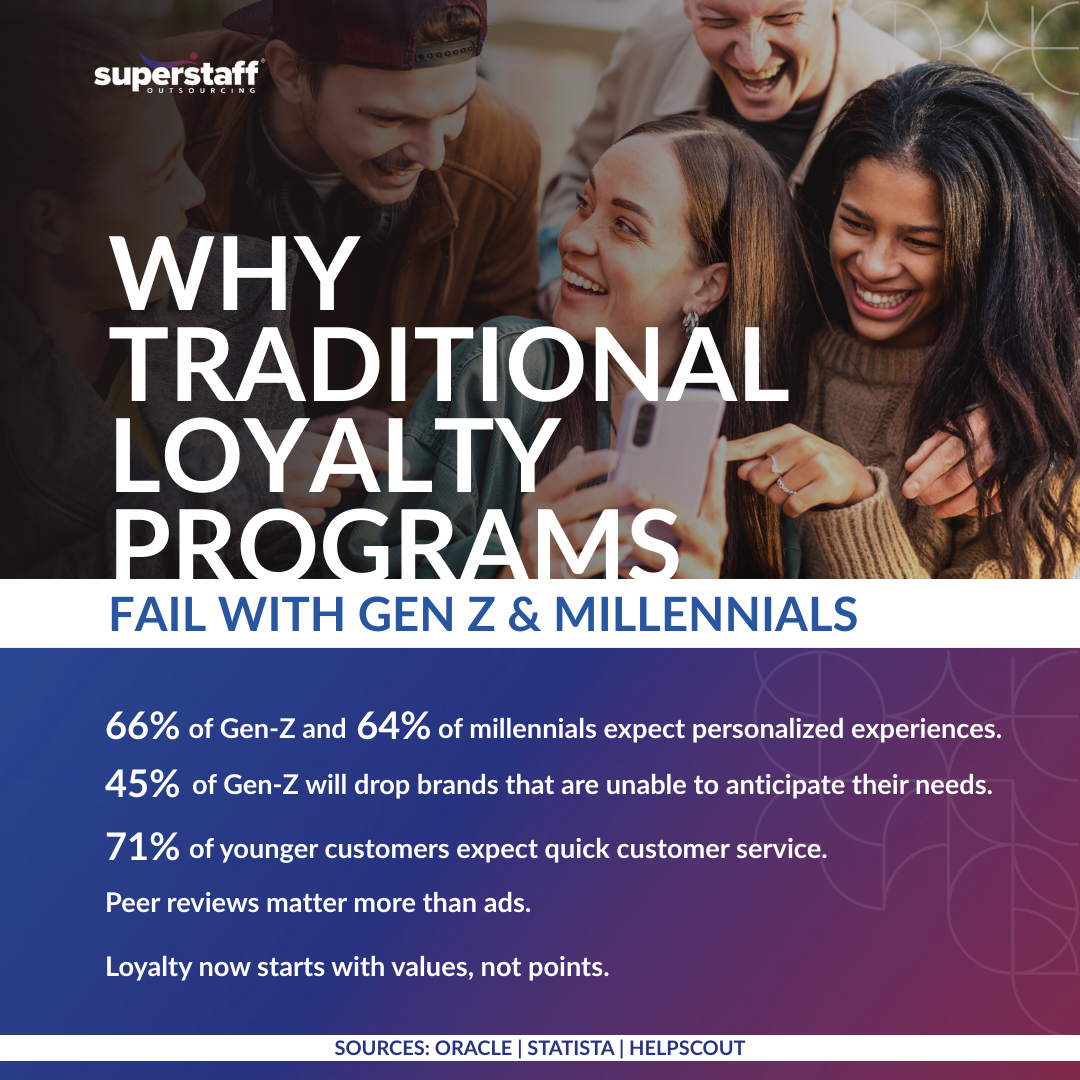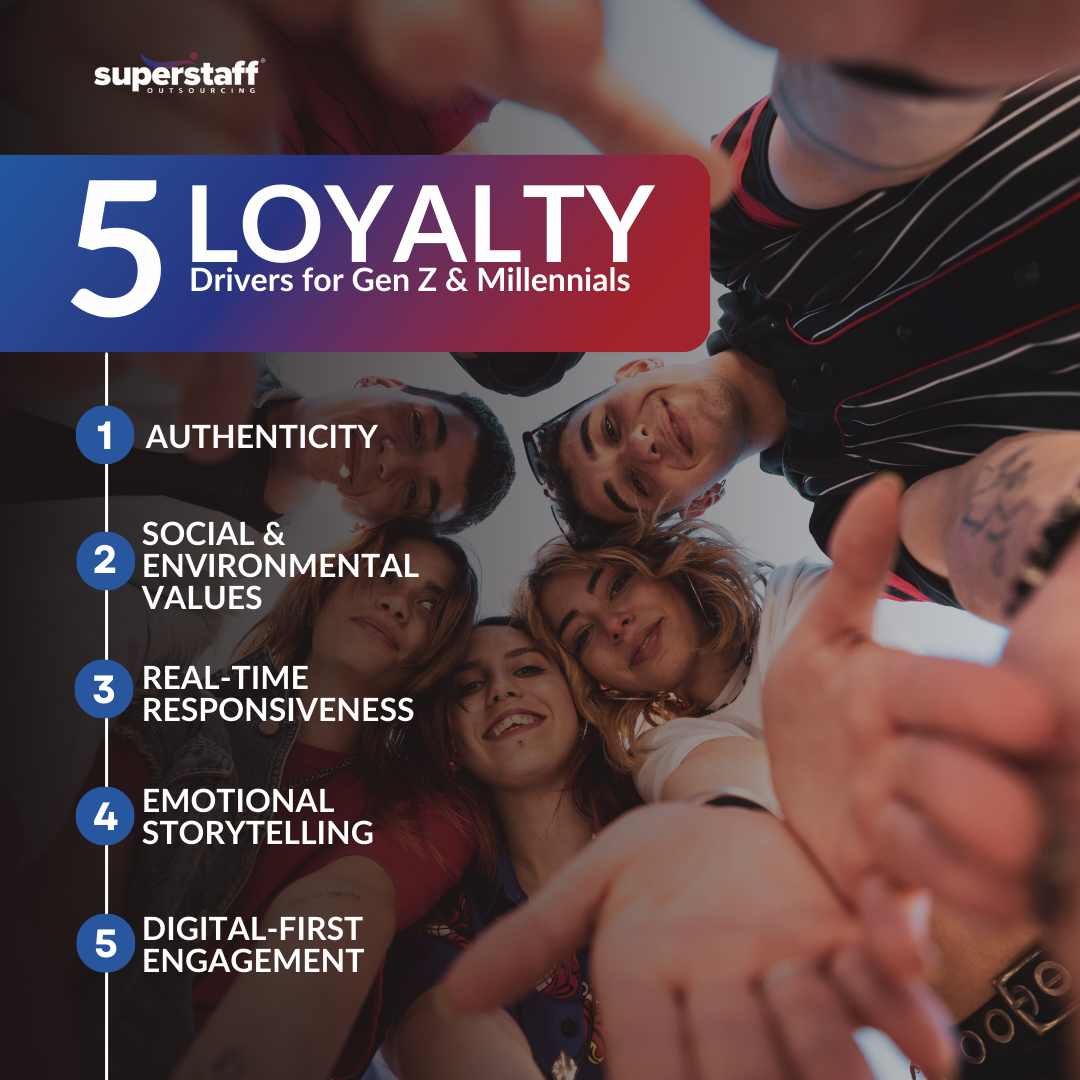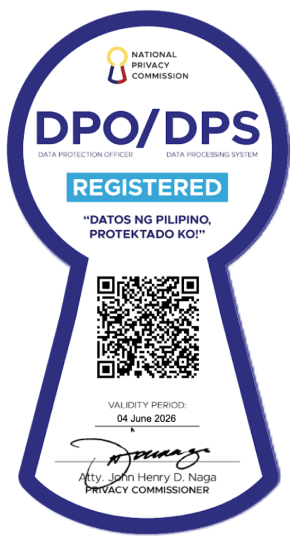
Gone are the days when sticking with one brand was a lifelong habit. Today’s younger consumers—Millennials and Gen Z—are rewriting the rules. They expect brands to stand for something real. They want transparency, value alignment, personalization, and genuine connection. And if brands fall short? These generations have no problem walking away.
Millennials and Gen Z now dominate the market, commanding massive buying power and cultural influence. Understanding what makes them loyal is no longer optional—it’s critical. Let’s unpack how these younger generations are reshaping brand loyalty and explore practical ways your business can thrive in this new era of shifting brand loyalty trends and consumer preferences.
Authenticity Matters—A Lot
Millennials and Gen Z have grown up surrounded by a constant flood of advertisements, content, and corporate messaging. This constant exposure has made them incredibly sharp at spotting when a brand isn’t being genuine. They quickly identify brands that try too hard or come across as dishonest—and when they do, they won’t hesitate to walk away.

In fact, a whopping 90% of Millennials and Gen Z say authenticity is a key factor in deciding which brands to support. But authenticity today isn’t just about being relatable. It’s about anticipating needs, delivering personalized interactions, and responding quickly. According to Oracle, 66% of Gen Z and 64% of Millennials expect personalized experiences. Even more striking: 45% of Gen Z consumers will abandon a brand if it can’t anticipate what they need. And 71% expect brands to respond to service inquiries almost instantly.
So what does this mean for your brand? It means honesty and consistency in your messaging are just the starting point. You also need to show that you understand your audience and are ready to act in real time. Authenticity now includes personalization, relevance, and responsiveness. Performative activism, superficial taglines, or jumping on every social trend without substance? That’s the fastest way to lose trust.
Ditch the polished corporate voice. Tell real stories. Show your process, not just your polish. Be transparent about your wins—and your struggles. Your brand becomes more human by embracing honesty, vulnerability, and consistency. And that’s what earns loyalty in a world where trust is earned moment by moment.
Values Over Products
Younger consumers care deeply about what your brand stands for—often even more than what you actually sell. Products get their attention, but purpose earns their trust. For Millennials and Gen Z, brand loyalty is a matter of identity. They want to support companies that are clear about their values and actively take stances on causes that matter—whether it’s sustainability, mental health, diversity and inclusion, or social justice.
This generation doesn’t want performative posts or buzzword-laden campaigns. They want proof. Patagonia doesn’t just talk about environmentalism; they embed it in everything from their supply chain to their activism. Ben & Jerry’s doesn’t shy away from politics; they make advocacy part of their brand DNA. That’s why these companies have built communities, not just customer bases.
If your brand stays silent or vague on the issues your audience is passionate about, you risk becoming irrelevant. Young consumers don’t expect perfection, but they do expect effort and honesty. It’s better to be transparent about where you’re starting than to pretend you’ve already arrived.
Choose causes that truly align with your brand’s mission and make a real commitment. Share the full story—the wins, the setbacks, and the work in progress. That’s what builds trust in this new era of customer behavior and strengthens brand loyalty.
Personalized Experiences Win Hearts

One-size-fits-all doesn’t cut it anymore. Millennials and Gen Z are looking for more than just great products—they want experiences that feel like they were made just for them. These consumers have grown up in an age where curated playlists, targeted content, and custom shopping suggestions are the norm. So when a brand treats them like just another face in the crowd, it feels like a step backward.
Think about it—how often do you skip emails or ads that clearly have nothing to do with your interests? That’s exactly how younger consumers feel when brands miss the mark on personalization. But when a brand gets it right? It feels like a conversation. It shows that the brand is listening, paying attention, and actually cares.
The key here is thoughtful use of data. It’s not about being creepy or invasive—it’s about showing up in ways that are relevant. That could mean suggesting the right product at the right time, sending a birthday message, or even just remembering a past purchase. These seemingly small touches build a sense of familiarity and appreciation.
But a word of caution: don’t overdo it. Personalization should feel helpful, not pushy. The goal is to enhance the customer journey, not to dominate it. Be subtle, be respectful, and always keep the user in control.
When done right, personalization is more than a strategy—it’s a relationship builder. And for Millennials and Gen Z, that relationship is what turns casual buyers into loyal brand advocates. If you’re thinking about how to attract young customers, this is the place to start.
Seamless Digital-First Interactions
Millennials and Gen Z were raised with smartphones in their hands and high-speed internet at their fingertips. They’re not just comfortable with digital—they expect it to work flawlessly. If your website is clunky, your app crashes, or your checkout process has too many steps, they won’t wait around. They’ll bounce.
These generations expect brands to deliver smooth, intuitive digital experiences. That means fast-loading websites, easy navigation, and mobile-first design. If it doesn’t feel effortless, it’s not going to fly. But it’s more than just having a great website or app—it’s about how well all your channels work together.
Younger consumers interact with brands across multiple platforms—Instagram, TikTok, email, chatbots, live chat, and beyond. They expect you to remember who they are across these channels and provide consistent, responsive support no matter where they reach out. A conversation that starts on social media should be able to continue via email or in-app without starting from scratch.
That’s why an omnichannel strategy isn’t just a nice-to-have—it’s a necessity. Your systems need to talk to each other. Your teams need to be aligned. And your user experience should feel like one cohesive journey, not a bunch of disconnected touchpoints.
If you haven’t already, now’s the time to invest in a strong digital infrastructure. Streamline your website and app. Test your user flow from start to finish. And always, always design with mobile in mind. For Gen Z and Millennials, a seamless digital-first interaction isn’t a bonus—it’s the baseline.
Respond in Real-Time
Millennials and Gen Z have grown up in a world where instant gratification is the norm. From streaming services to on-demand deliveries, waiting just isn’t part of their playbook. So, when they reach out to your brand—especially with a question or a complaint—they expect to hear back fast. We’re not talking about next-day fast. We’re talking minutes, not hours.
If they message you on Instagram or tweet about an issue, they want a response right there—not a “please email our support team” reply. Redirecting them to another channel feels impersonal and frustrating. These consumers want brands to meet them where they are and respond like real humans.
That’s where a dedicated support team comes in. Consider outsourcing your customer service to a skilled team in the Philippines. Not only can you offer 24/7 coverage, but you’ll also have professionals trained in empathy, speed, and problem-solving—all of which resonate with younger audiences who value both efficiency and genuine care.
Emotional Connection Is Powerful
Millennials and Gen Z don’t just want a product—they want to feel something when they buy, scroll, or engage with your brand. Emotional resonance is what makes a brand stick in their minds long after the transaction is over.
Think about the last time a story made you pause mid-scroll. Maybe it was a brand sharing its origin, showcasing its team, or taking a stand on something meaningful. That emotional pull is what today’s consumers crave. They want brands that make them feel inspired, seen, or even part of something bigger.
Campaigns like Nike’s “Dream Crazy” or Dove’s real beauty initiatives work because they go beyond the product. They tell stories that stir something inside. That kind of connection doesn’t just create customers—it creates advocates.
Your brand has a story. Tell it. Talk about your why, your people, and the journey you’re on. Let customers in on the purpose behind your product, not just the specs. Because in this loyalty game, facts tell—but stories? They win hearts.
Peers Influence Purchasing
Ask any Millennial or Gen Z consumer where they get their recommendations, and chances are, it’s not from a billboard or a TV ad. It’s from friends, influencers, online reviews, or that one person on TikTok who seems to know everything about skincare. Traditional advertising is no longer the loudest voice in the room.
These generations trust real people over polished brand messaging. They scroll through comments, check reviews, and see what their favorite creators are posting before they buy. Even a random stranger’s testimonial can carry more weight than a professional ad.
That’s why your happiest customers are also your best marketers. Encourage them to share their stories, leave reviews, and tag you in their posts. User-generated content doesn’t just boost credibility—it builds community. Partner with micro-influencers who actually use and love your product. Make your audience part of the conversation, not just the target of it.
Transparency Builds Trust
For Millennials and Gen Z, curiosity goes deeper than what’s on the label. They want to know how things are made, who’s making them, and what your business stands for behind the scenes. If something feels hidden or vague, they get skeptical fast.
It’s not just about what you say—it’s about what you show. Younger consumers appreciate when brands pull back the curtain and let them see the process, not just the polished result. That includes supply chain practices, environmental impact, labor policies, and pricing decisions.
Transparency doesn’t mean being perfect. It means being honest. Own your challenges. Talk about what you’re working to improve. It shows that your brand is evolving—and that you’re not just in it for the optics.
The more open you are, the more trust you earn. And in a world where trust is hard to win and easy to lose, that openness can make all the difference.
Sustainability Isn’t Optional
Millennials and Gen Z have made one thing very clear: sustainability is not a trend—it’s an expectation. They want to support brands that take environmental issues seriously, not just in marketing, but in actual practice. If your brand doesn’t have a stance—or worse, pretends to care without follow-through—they’ll look elsewhere.
This isn’t about jumping on the green bandwagon. It’s about making conscious, consistent efforts to do better. Whether that’s switching to eco-friendly packaging, sourcing materials responsibly, or offsetting carbon emissions, every step counts. And yes, they’ll notice.
Brands like Allbirds and The Body Shop have built loyalty by weaving sustainability into their identity. But you don’t need to be perfect—you just need to be honest and proactive. Start with an audit of your current operations. Where can you reduce waste? What can you improve?
Then share the journey. Talk about your goals, your wins, and even the setbacks. When customers see that you’re trying—and that you mean it—they’ll stick with you.
Loyalty Programs Need an Update
Punch cards and generic discounts don’t cut it anymore. Millennials and Gen Z want loyalty programs that feel… well, loyal. They’re looking for real value, exclusive perks, and experiences that feel rewarding—not robotic.
These consumers are used to personalization, so your loyalty program should reflect that. Think early access to new drops, behind-the-scenes content, VIP communities, or personalized product recommendations. And make it digital-first—accessible through mobile apps, emails, or even text. If your loyalty program feels outdated or hard to use, it’ll be ignored.
Gamification is another way to keep things engaging. Turn rewards into fun challenges or let users track their progress in real time. Make it feel like they’re part of something bigger than just collecting points.
Bottom line: loyalty today is about connection and recognition. Make your program feel thoughtful and exclusive, and you’ll turn customers into fans for the long haul.
Adaptability Is Key
If there’s one constant with Millennials and Gen Z, it’s change. Trends evolve fast, and what’s popular one week might be old news the next. These generations live online, where culture shifts daily. To keep up, brands can’t just react—they need to evolve continuously.
It’s not about chasing every trend. It’s about staying tuned in to what matters to your audience. That means listening—really listening—to what your customers are saying. It means testing new ideas, learning from what works, and letting go of what doesn’t.
Reassess your brand voice often. Are you speaking their language? Are your campaigns still relevant? If not, adjust. And if you don’t have the time or team to stay agile, consider outsourcing some of your operations. Offloading back-office work to a reliable partner in the Philippines, for example, can free up your internal team to focus on strategy, creativity, and speed.
In a world that never sits still, adaptability isn’t just an advantage—it’s survival.
READ MORE: Signs That Your Customer Loyalty Strategies Work
Unlock Brand Loyalty With Scalable Support Solutions
The loyalty game has shifted—and fast. For Millennials and Gen Z, loyalty doesn’t come from punch cards or habit. It’s built on authenticity, emotional connection, digital ease, and shared values. These younger consumers expect more, and brands that can’t keep up will be left behind.
Understanding what influences their loyalty isn’t just smart marketing—it’s a business must. If you’re wondering how to meet rising expectations without overstretching your internal team, now might be the time to consider support solutions that scale with you.
That’s where Philippines customer service outsourcing comes in. With a rich talent pool, a strong customer-first culture, and 24/7 capabilities, the customer service outsourcing Philippines market offers a strategic edge. Whether you’re looking for outsourced customer service Philippines options or a reliable back office service provider Philippines, tapping into offshore support can help you stay agile and responsive.
By embracing customer support outsourcing Philippines solutions, your brand can deliver the fast, empathetic, and personalized experiences that younger generations expect—without sacrificing quality or scalability.
Because loyalty today isn’t given. It’s earned—one meaningful, well-supported experience at a time.






